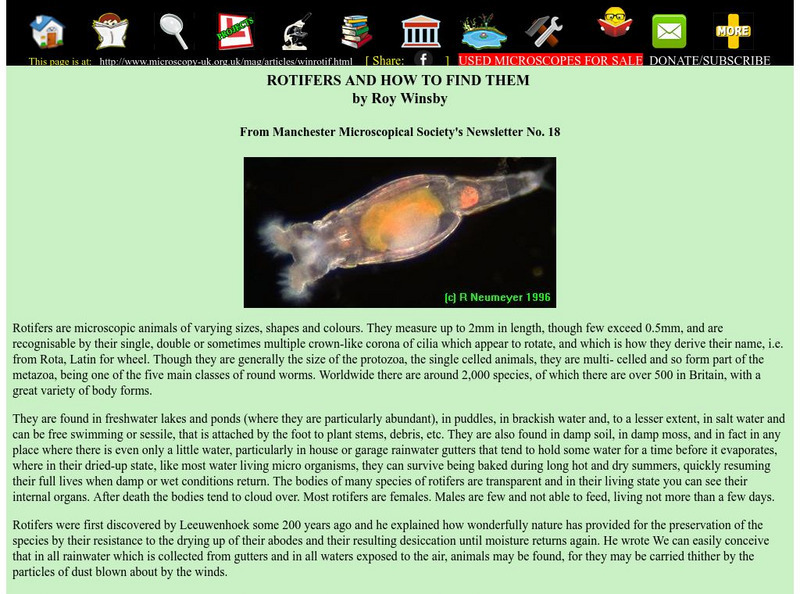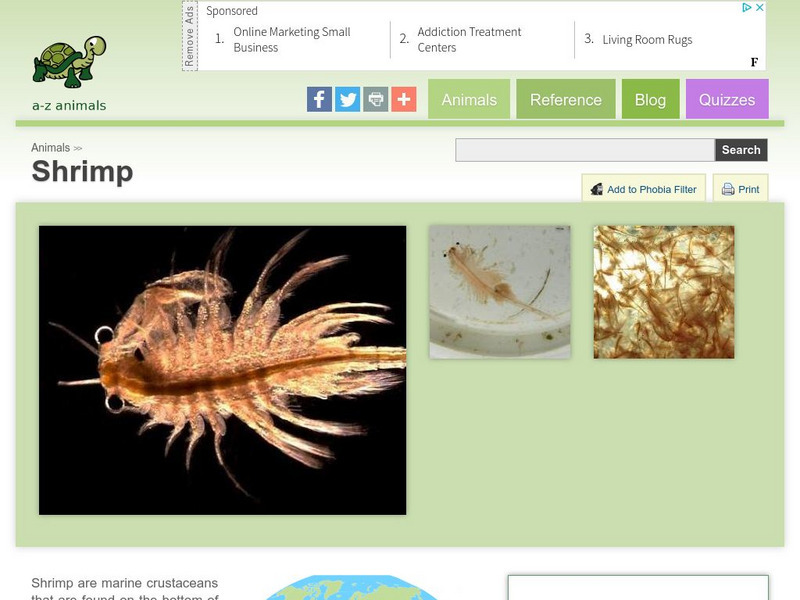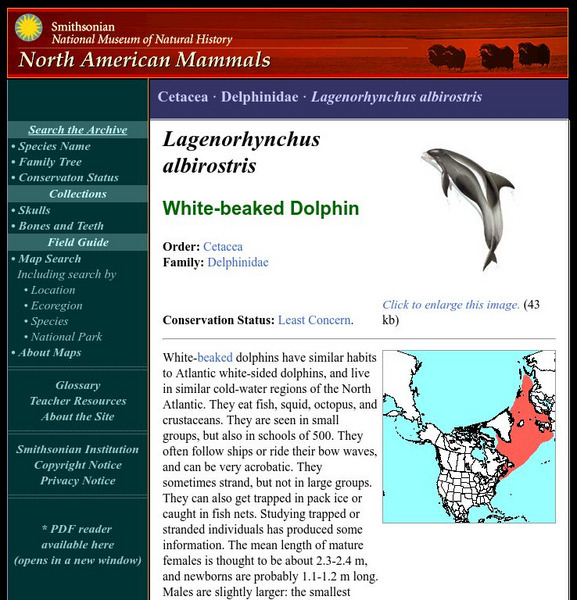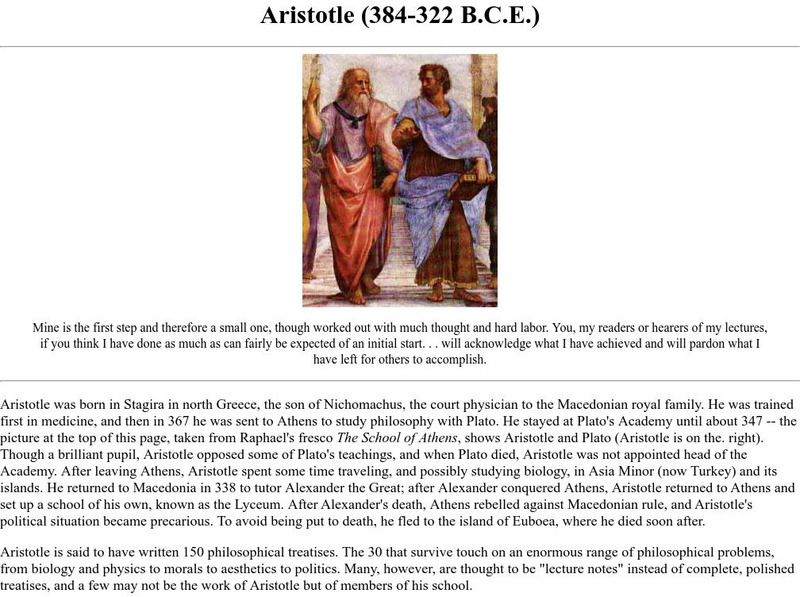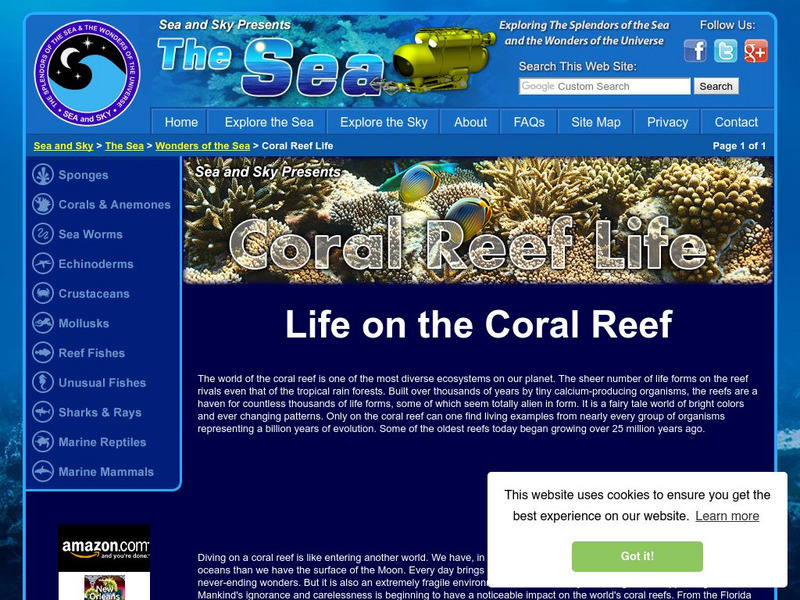crustacens Teacher Resources
Find crustacens lesson plans and worksheets
Showing 229 resources
National Science Foundation
National Science Foundation: Science Behind the News: Bio Inspired Materials
The peacock mantis shrimp, which is actually a crustacean and not a shrimp, fascinates scientists due to the power of its small club appendage. It can hit with a force of 200 pounds although this animal is only four inches long....
Science Friday Initiative
Science Friday: Blue Whale Barrel Roll
Blue whales can grow to 90 feet! "That's longer than a tennis court. Getting that big requires a lot of fuel," says Jeremy Goldbogen, a postdoctoral researcher at the Cascadia Research Collective. That's why Goldbogen studies the whales'...
Iowa State University
Iowa State University: Iowa Insect Information Notes Sowbugs and Pillbugs
Pillbugs may look like insects, but they're really crustaceans. This article describes them and their habitat, and describes what to do if they become a nuisance in the home.
TED Talks
Ted: Ted Ed: How Life Came to Land
This video explores arthropods, who first made the transition from water to land and who outnumber all terrestrial animals. [5:28] Followed by a short quiz and a list of additional resources to explore.
Regents of the University of Michigan
Animal Diversity Web: Rusty Crayfish
Comprehensive information about the rusty crayfish is presented, including the positive and negative economic impacts they have on humans. This page includes excellent photographs and detailed classification information.
PBS
Pbs: Nature: Crash: A Tale of Two Species
A documentary film about the horseshoe crab and its importance to a tiny shorebird known as the red knot bird. Human threats to the crab will directly threaten both the crab and the little bird who depends on it. Links to related topics...
University of Southern California
Structure of Matter: Animals
A slide show that demonstrates the development of physical structure in the animal world, moving from sponges through mammals.
Microscopy UK
Microscopy Uk: Rotifers and How to Find Them
Interesting discussion of rotifer anatomy, habitat, feeding habits, locomotion, and species.
A-Z Animals
A Z Animals: Animal Facts: Shrimp (Caridea)
Provides photographs and a fact card about shrimp. Discusses where they are found, the variety of species, diet, predators, reproduction, and their similarities and differences from prawns.
Other
Maryland State Symbols
Click on a word to find lots of information and a picture of each Maryland state symbol.
NOAA
Noaa: Annual Commercial Landings Statistics
The NOAA Fisheries offers this interactive statistics page to find out about the catches and value of various species of fish and crustaceans taken by commercial fisheries since 1950.
California Academy of Sciences
Ca Academy of Sciences: Paddlefish Feeding
American paddlefish typically live in the Mississippi River and feed primarily on zooplankton, but also feed on crustaceans and bivalves. Find out more about the species as Academy Biologist Jim provides a behind the scenes look during a...
NOAA
Noaa: Ocean Explorer: Krill in National Marine Sanctuary
An overview from Ocean Explorer of the the marine crustacean, Krill. Includes info about life cycle, habitat, behavior, environmental importance and images.
Smithsonian Institution
National Museum of Natural History: American Mammals: White Beaked Dolphin
White-beaked dolphins have similar habits to Atlantic white-sided dolphins and live in similar cold-water regions of the North Atlantic. They eat fish, squid, octopus, and crustaceans. Learn more about the Lagenorhynchus albirostris,...
Smithsonian Institution
National Museum of Natural History: American Mammals: Gray Whale
Gray whales are bottom feeders. They roll to one side and lower the lip to scour and siphon the bottom for tiny crustaceans, especially amphipods which are known as "sand fleas." Learn more about the Eschrichtius robustus, more commonly...
University of California
Ucmp: Aristotle
The life and philosophical treatises of Aristotle (384-322 BCE) are surveyed, including his writings on biology, zoology and physics.
Wikimedia
Wikipedia: Arthropod
Wikipedia offers information on arthropods, the largest phylum of animals. Includes scientific classification chart and image.
A-Z Animals
A Z Animals: Animal Facts: Woodlouse (Oniscidea)
This entry identifies the defining characteristics of the oniscidea, otherwise known as the woodlouse.
Other
Sea Sky: Reef Life
The coral reef, its composition and inhabitants are explored here in detail. With additional information about the life that inhabits a coral reef.
Read Works
Read Works: The Lobster Blues
[Free Registration/Login Required] An informational text about a rare blue lobster. A question sheet is available to help students build skills in reading comprehension.
Georgia Aquarium
Georgia Aquarium: Peppermint Shrimp
Use this animal guide to learn the scientific name and discover the habitat, diet, conservation status, and physical and special characteristics of peppermint shrimp.
CK-12 Foundation
Ck 12: Life Science: 9.10 Arthropods
Explore the behaviors, characteristics, and diversity of arthropods.
Monterey Bay Aquarium
Monterey Bay Aquarium: Acorn Barnacle
Meet the acorn barnacle and learn cool facts, its natural history, and conservation status.
Other
San Francisco Zoo: Land Hermit Crab
Detailed information and fascinating facts about the land hermit crab include diet, habitat, physical features, behavior, and conservation status.
Other popular searches
- Marine Crustaceans
- Shells and Crustaceans
- Crustaceans of the Ocean
- Crustaceans Kindergarten
- Crustaceans 2nd Grade
- Crustaceans Animals









